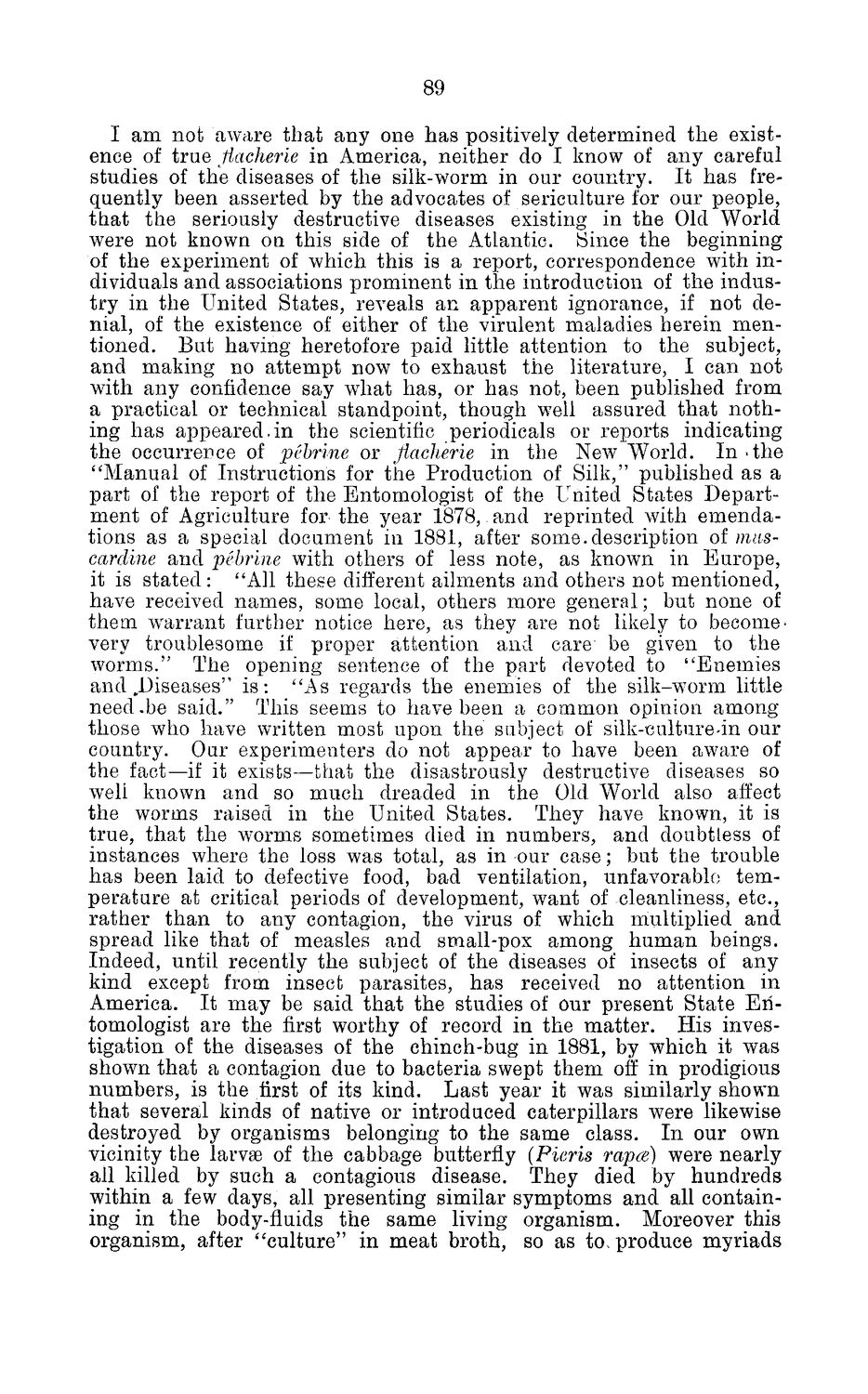| |
| |
Caption: Board of Trustees Minutes - 1884
This is a reduced-resolution page image for fast online browsing.

EXTRACTED TEXT FROM PAGE:
89 I am not aware that any one has positively determined the existence of true Jiacherie in America, neither do I know of any careful studies of the diseases of the silk-worm in our country. It has frequently been asserted by the advocates of sericulture for our people, that the seriously destructive diseases existing in the Old World were not known on this side of the Atlantic. Since the beginning of the experiment of which this is a report, correspondence with individuals and associations prominent in the introduction of the industry in the United States, reveals an apparent ignorance, if not denial, of the existence of either of the virulent maladies herein mentioned. But having heretofore paid little attention to the subject, and making no attempt now to exhaust the literature, I can not with any confidence say what has, or has not, been published from a practical or technical standpoint, though well assured that nothing has appeared.in the scientific periodicals or reports indicating the occurrence of pebrine or Jiacherie in the New World. In*the "Manual of Instructions for the Production of Silk," published as a part of the report of the Entomologist of the United States Department of Agriculture for the year 1878, and reprinted with emendations as a special document in 1881, after some.description of muscardine and pebrine with others of less note, as known in Europe, it is stated: "All these different ailments and others not mentioned, have received names, some local, others more general; but none of them warrant further notice here, as they are not likely to become* very troublesome if proper attention and care be given to the worms." The opening sentence of the part devoted to "Enemies and .Diseases" i s : "As regards the enemies of the silk-worm little need.be said." This seems to have been a common opinion among those who have written most upon the subject of silk-culture-in our country. Oar experimenters do not appear to have been aware of the fact—if it exists—that the disastrously destructive diseases so well known and so much dreaded in the Old World also affect the worms raised in the United States. They have known, it is true, that the worms sometimes died in numbers, and doubtless of instances where the loss was total, as in our case; but the trouble has been laid to defective food, bad ventilation, unfavorable temperature at critical periods of development, want of cleanliness, etc., rather than to any contagion, the virus of which multiplied and spread like that of measles and small-pox among human beings. Indeed, until recently the subject of the diseases of insects of any kind except from insect parasites, has received no attention in America. It may be said that the studies of our present State Entomologist are the first worthy of record in the matter. His investigation of the diseases of the chinch-bug in 1881, by which it was shown that a contagion due to bacteria swept them off in prodigious numbers, is the first of its kind. Last year it was similarly shown that several kinds of native or introduced caterpillars were likewise destroyed by organisms belonging to the same class. In our own vicinity the larvae of the cabbage butterfly (Pieris rapes) were nearly all killed by such a contagious disease. They died by hundreds within a few days, all presenting similar symptoms and all containing in the body-fluids the same living organism. Moreover this organism, after "culture" in meat broth, so as to, produce myriads
| |